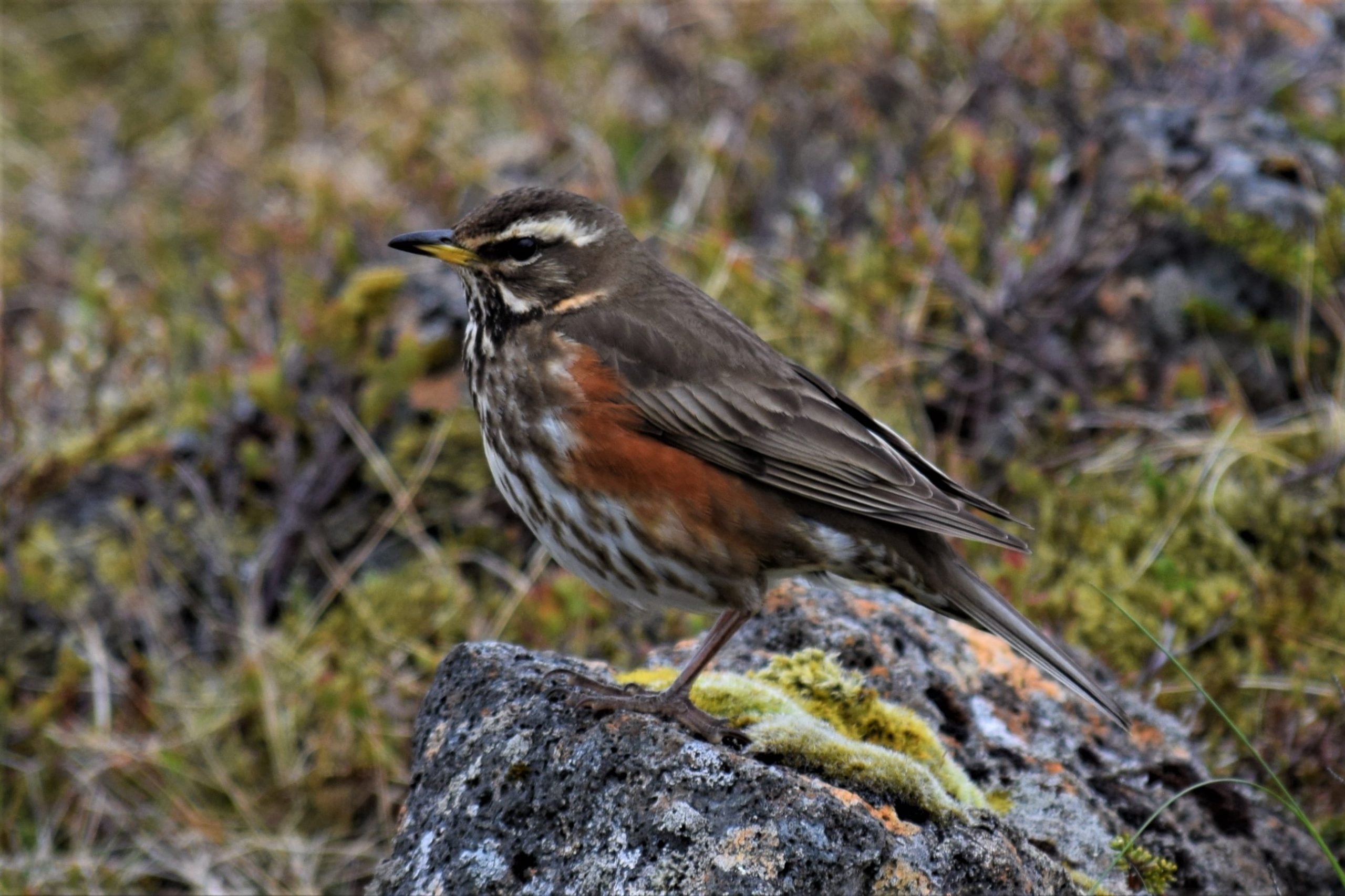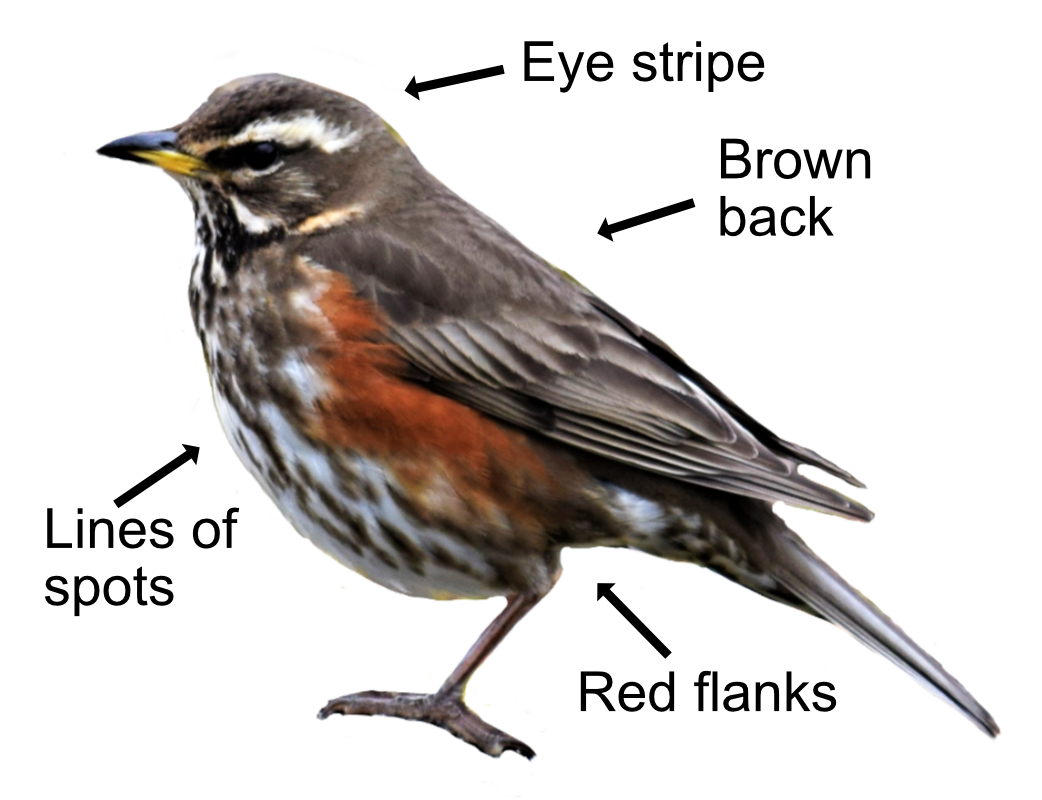
If you listen carefully on a chilly autumn night, you might hear the "tseee" call of migrating Redwings passing overhead. They use this flight call to keep together. The Redwing, like the Fieldfare, is a winter visitor and is the UK's smallest true thrush, arriving in October and leaving in April. They roam across the countryside, feeding in fields and hedgerows and are often seen with Fieldfares. You will only get them in gardens in the coldest weather, when snow covers the fields.
The Redwing is smaller than a blackbird. It has dark upper parts, a yellow buff breast with lines of dark spots that look more streaked, a bold head pattern with a strong cream stripe over the eye, and rust red flanks (hence the name). The rust red underwing is clearly visible in flight.
Redwings roost in thick hedges, especially if there are lots of berries. They eat fallen fruit, worms, snails, slugs, and berries - especially hawthorn.

They nest in a tree or low bush. The female builds a cup-shaped nest of grass, twigs, and moss. She incubates the 4-6 eggs for 12 days. Once hatched, the young are fed by both parents and leave the nest after 15 days. The parents continue to feed the youngsters for a further 2 weeks. Dad often takes over the feeding of the first brood while mum gets on with a second.
About 1 million Redwing visit us in winter, arriving from two different places - Redwing from Scandinavia and slightly larger Redwing from Iceland. The Icelandic birds are mainly found in Scotland and the Scandinavian ones in England. Redwing are very nomadic and will winter in different areas in different years. Similar to the Fieldfare, about 10 pairs a year stay and breed in Northern Scotland.
Their Latin name is 'turdus iliacus' from 'turdus' for 'thrush' and 'ile' meaning 'flank'.